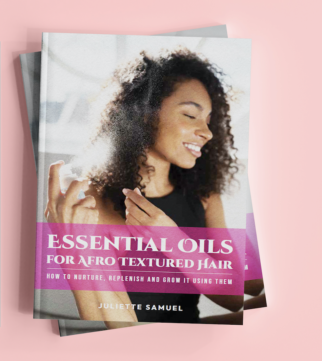As African Americans, most of us experience skin discoloration at one point or another in our lives. In fact, there is a huge variety of skin discolorations that affects people all around the world, regardless of skin color, creed and demographics.
Let’s take a closer look at the causes of skin discolorations, dark spots and hyperpigmentation and how they can be overcome with relative ease.
The All-important Melanin and African American Skin
When it comes to skin color, the word melanin is used a lot. In fact, it is used almost exclusively when describing any skin condition. This is because melanin is a compound released in your skin that gives your skin its color. Melanin is a compound released by your melanocytes.
At the bottom of your skin reside cells known as melanocytes. These cells release melanin and give your skin its definitive color.
To put it simply, the more melanin in your skin, the darker your complexion. People with ethnic skin usually have more melanin than other people. But you know this already.
Melanin is not only useful as a skin coloration pigment. Melanin is a compound that protects your skin against the effects of the sun.
The more melanin in your skin, the more protected a person is against the harmful UV radiation emitted by the sun. This is the reason why people of color are less at risk from skin cancer than lighter skinned individuals.
This does not mean you for you to skip your sun screen.
What are Skin Discolorations?
Skin discolorations are changes in your skin’s color due to a change in the activity of your body’s melanocytes. Many skin discolorations are temporary while others are rather permanent. However, most skin discolorations can be reversed if they are detected early enough.
Many people have either dealt with or know someone who has a skin discoloration. For many people, their skin discoloration may not be easily visible. For others, nothing on their face may be more visible than their skin discoloration.
The Causes of Skin Discolorations
There are in fact a number of reasons why skin discolorations happen. However, the root cause, the true cause of the discoloration is a change in melanocyte activity.
Various stimulants change the activity of the melanocytes in the skin and cause changes in the rate of melanin production.
There are times when the melanocytes do not produce the ‘right’ or ‘normal’ amount of melanin. Whether by UV light, chemicals or genetics, the melanocytes start producing either too little or too much melanin. This phenomenon is known as skin discoloration.
The Types of Skin Discolorations
For most people, UV light (sun rays) is the most common cause of skin discoloration. UV rays penetrate your skin and can reach the melanocytes. The UV light stimulates the melanocytes and they start producing more melanin than they should; a condition known as hyperpigmentation.
Interestingly, the birthmarks that many people have are actually a pigmentation problem where excess melanin was produced before birth. In fact, the dark spots that many of us see are in fact spots where excess melanin has been produced. We just mistake dark spots for other skin conditions.
Another skin discoloration involves the absence of any melanin at all. Due to genetic factors, the melanocytes in the skin produce no melanin at all; a condition known as albinism.
However, the chances of this happening are 0.005%, or 1 in every 17000 people.
Freckles are another type of skin condition that is very common amongst Caucasian people.
Due to the low amount of melanin in their skin, lighter skinned individuals are more at risk of gaining freckles. For many people, freckles are actually genetic. Fortunately, they can be reduced.
Treatment for Skin Discolorations
There are a number of treatments available for skin discolorations. However, it should be remembered that treatments for ethnic skin are different from treatments for causation skin. For example, kojic acid can be highly problematic for those with ethnic skin. However, it is usually safe for use on lighter skinned ethnic groups.
A home care skin care regimen for black skin, a bi-weekly visit to your esthetician and a semi-annual visit to your dermatologist will ensure that you have the best skin care possible.
Dedicated To Your Beauty,
Juliette Samuel
Esthetician/Author/Publisher




 Facebook
Facebook Twitter
Twitter Delicious
Delicious Digg
Digg Myspace
Myspace StumbleUpon
StumbleUpon Youtube
Youtube